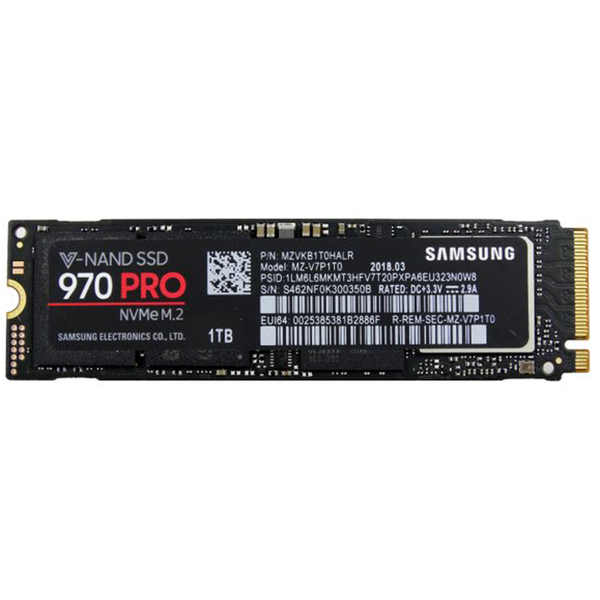HP SSD EX950 NVMe M.2 SSD Review: Geared for Gaming
Why you can trust Tom's Hardware
1TB and 2TB Performance Results
Comparison Products
For this review, we’ve combined the 2TB testing into our 1TB test pool due to a lack of 2TB drives for comparison (aside from a lonely 2TB Samsung 970 EVO). At 1TB, we’ve pitted the HP SSD EX950 against the Samsung’s 970 EVO Plus. We’ve also added the Samsung the 970 Pro, WD Black SN750, Adata’s XPG SX8200 Pro, MyDigitalSSD’s BPX Pro with updated 12.1 firmware, as well as the Intel 660P. And, for reference, we’ve added in a 1TB SATA 6Gb/s SSD, the Crucial MX500, and the 960GB Intel Optane SSD 905P, which is the fastest drive on the market.
Trace Testing – PCMark 8 Storage Test 2.0
PCMark 8 is a trace-based benchmark that uses Microsoft Office, Adobe Creative Suite, World of Warcraft, and Battlefield 3 to measure the performance of storage devices in real-world scenarios.
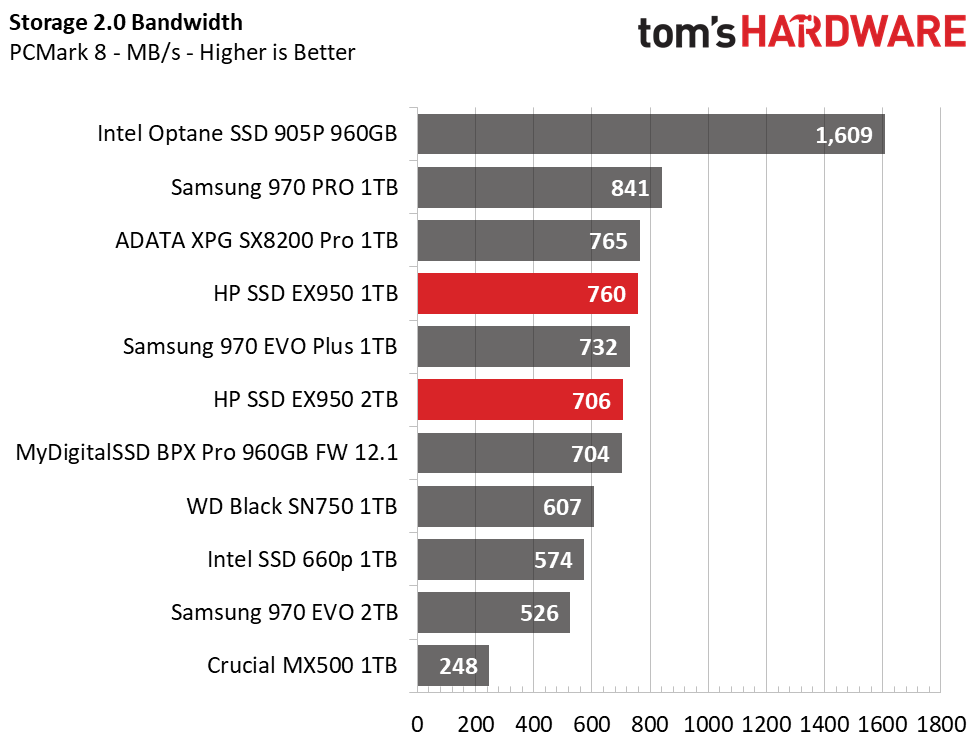
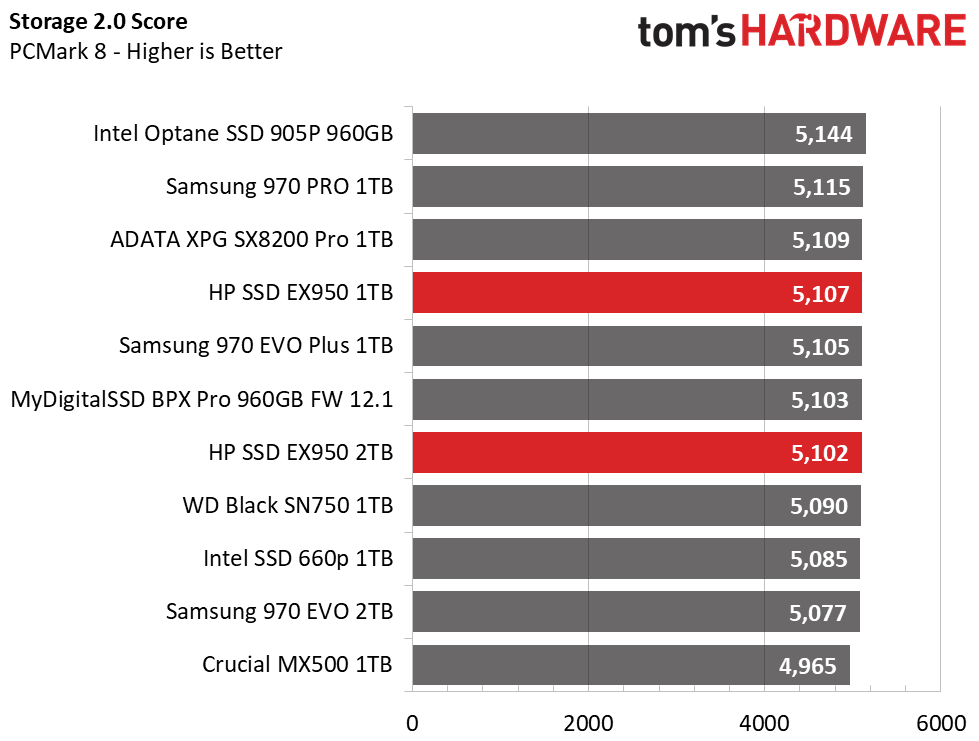
The 1TB HP EX950 ranks fourth overall, just a few points and a few MB/s behind the ADATA SX8200 Pro. With an average bandwidth of 760 MB/s, its performance is quite impressive. The 2TB model, however, was slightly slower at 706 MB/s. Compared to the 2TB Samsung 970 EVO, though, performance is quite better.
Game Scene Loading - Final Fantasy XIV
The Final Fantasy XIV StormBlood benchmark is a free real-world game benchmark that easily and accurately compares game load times without the inaccuracy of using a stopwatch.
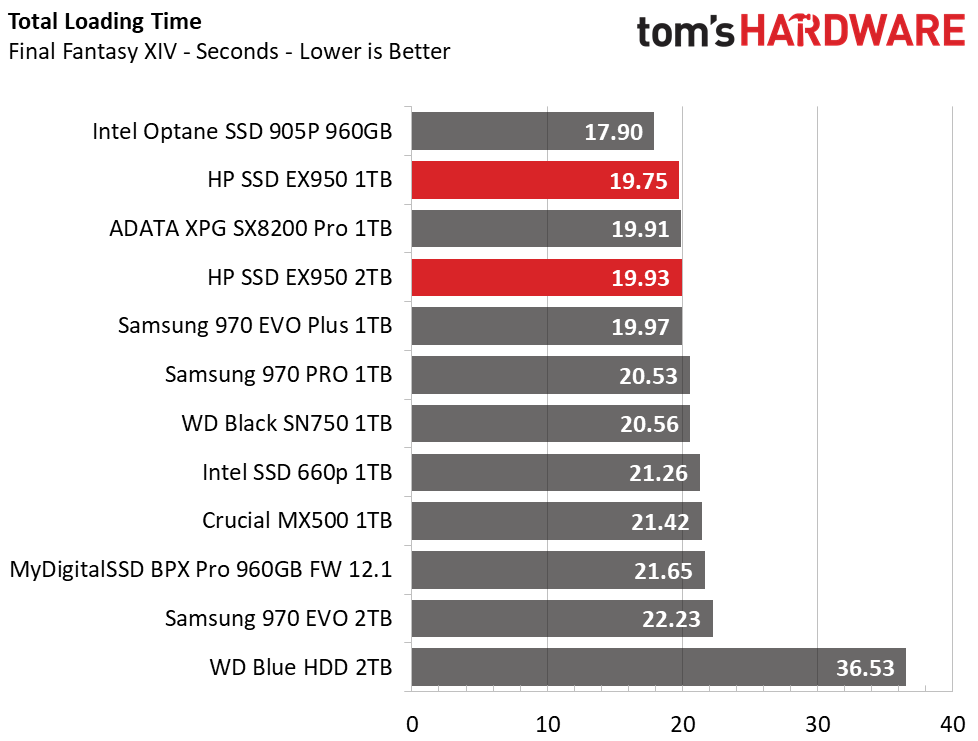
As an SSD marketed to gamers, especially those in eSports, we’re expecting nothing but the best. And we get just that. Well, almost. The HP EX950 comes in second place, just behind the Optane Intel 905P, with a total load time of 19.75s. Again, the 2TB model exhibits slightly slower performance.
Transfer Rates – DiskBench
We use the DiskBench storage benchmarking tool to test file transfer performance with our own custom 50GB block of data. Our data set includes 31,227 files of various types, like pictures, PDFs, and videos. We copy the files to a new folder and then follow up with a read test of a newly-written 6 GB file.
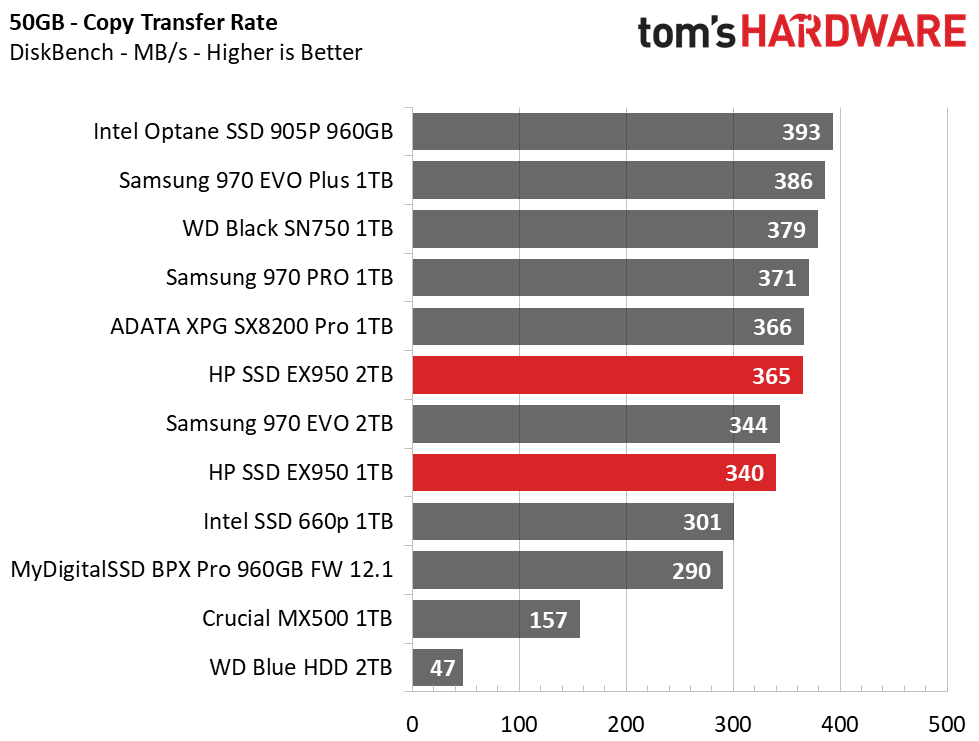
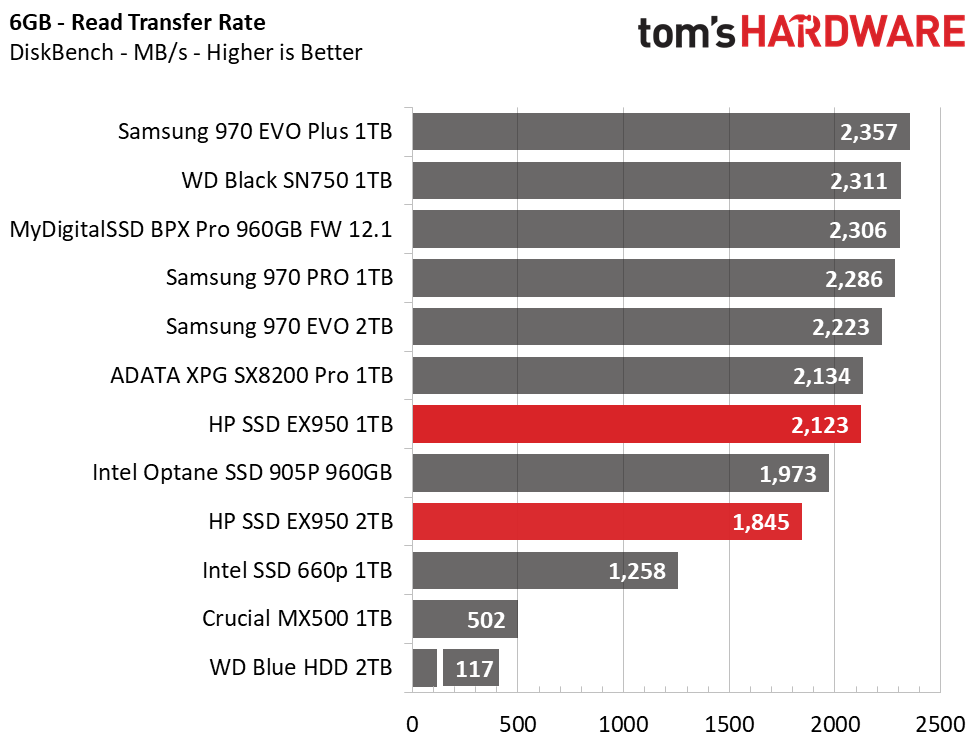
Unlike the previous two tests, the EX950 2TB actually surpasses the performance of the 1TB model. With an average of 340 MB/s from the 1TB model and 365 MB/s from the 2TB model, these drives don’t attain top positions. But overall, they are still very fast.
Read performance could use some improvement, though. While the read speeds of 2,123 MB/s and 1,845 MB/s are respectable in their own right, the EX950 lags slightly behind the Samsung drives, WD Black SN750, and E12-powered MyDigitalSSD BPX Pro.
SYSmark 2014 SE
Like PCMark, SYSmark uses real applications to measure system performance. SYSmark takes things much further, however. It utilizes fourteen different applications to run real workloads with real data sets to measure how overall system performance impacts the user experience. BAPCo's SYSmark 2014 SE installs a full suite of applications for its tests, which includes Microsoft Office, Google Chrome, Corel WinZip, several Adobe software applications, and GIMP. That also makes it a great test to measure the amount of time it takes to install widely-used programs after you install a fresh operating system.
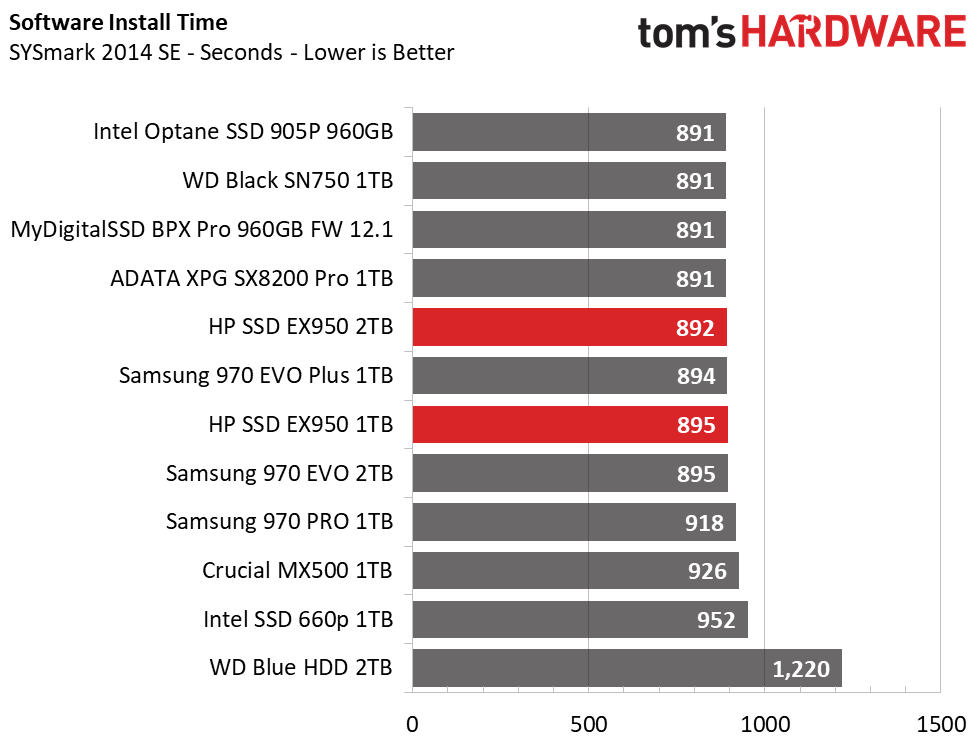
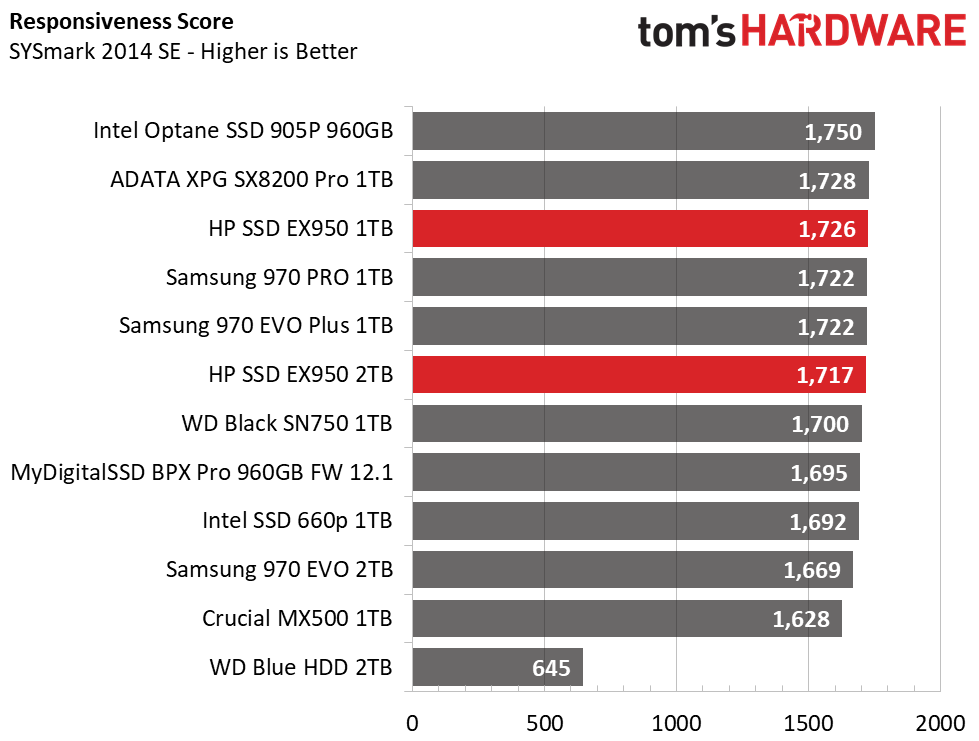
The drives install the benchmark within seconds of the other comparable drives, which is good to see: That's almost as fast as the Intel 905P. The full benchmark results are impressive, too. The 1TB model ranks third and proves to be quite snappy with performance that is just slightly better than the Samsung 970 Pro. The 2TB model ranks sixth overall and offers better performance than the 2TB Samsung 970 EVO.
ATTO
ATTO is a simple and free application that SSD vendors commonly use to assign sequential performance specifications to their products. It also gives us insight into how the device handles different file sizes.
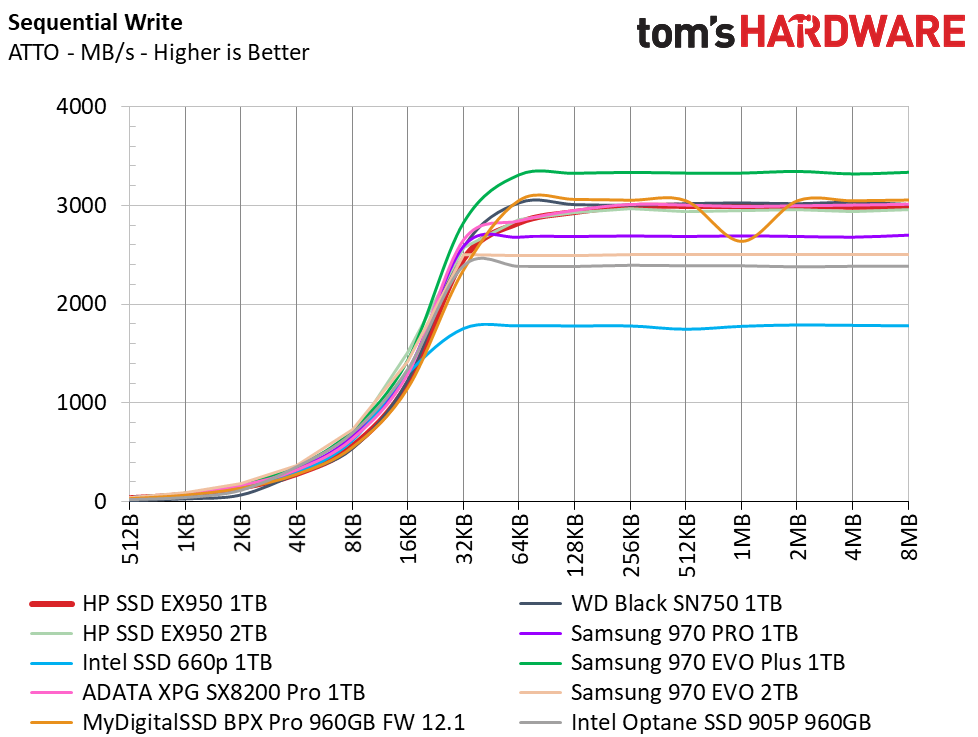
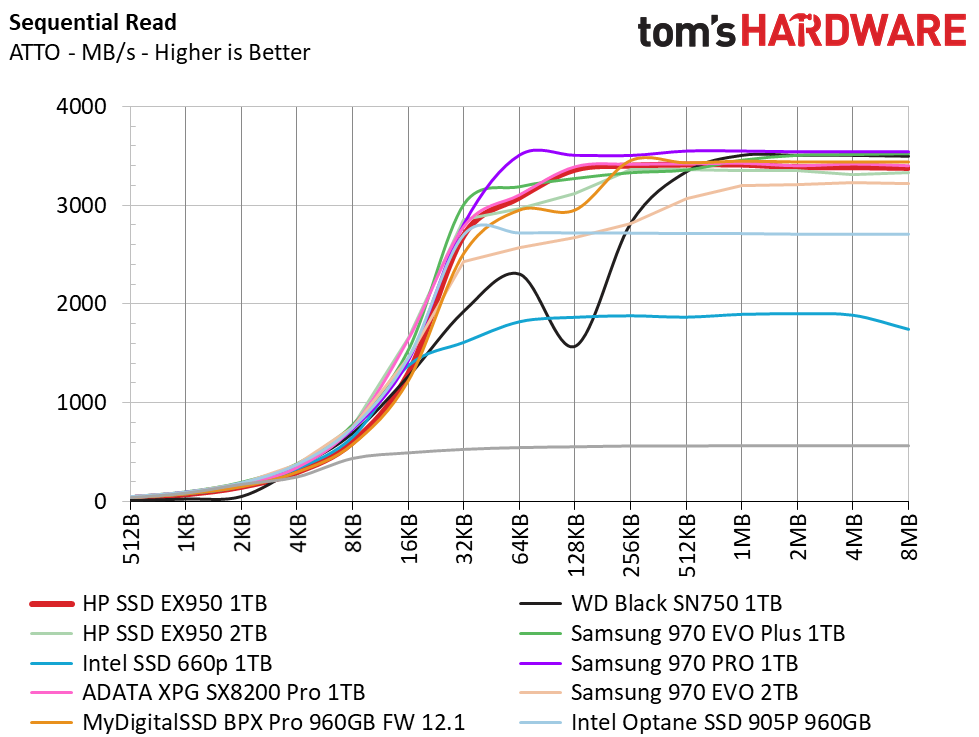
The HP EX950 shows similar sequential performance with both capacities over the full span of file sizes with a maximum of 3.4GB/s read and 3GB/s write. However, the 2TB model falls behind the 1TB model by about 30-50 MB/s during both reads and writes.
Anvil's Storage Utilities
Anvil's Storage Utility is a commonly-referenced benchmark that simplifies the complex IOMETER benchmark and its underlying Dynamo engine with a one-click software wrapper.
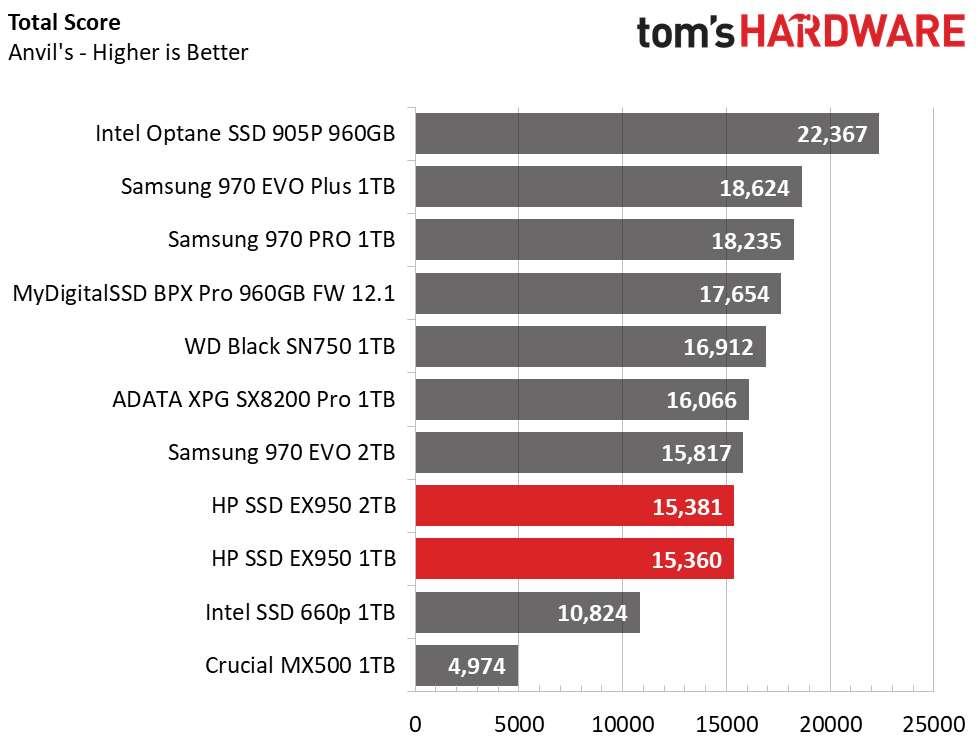
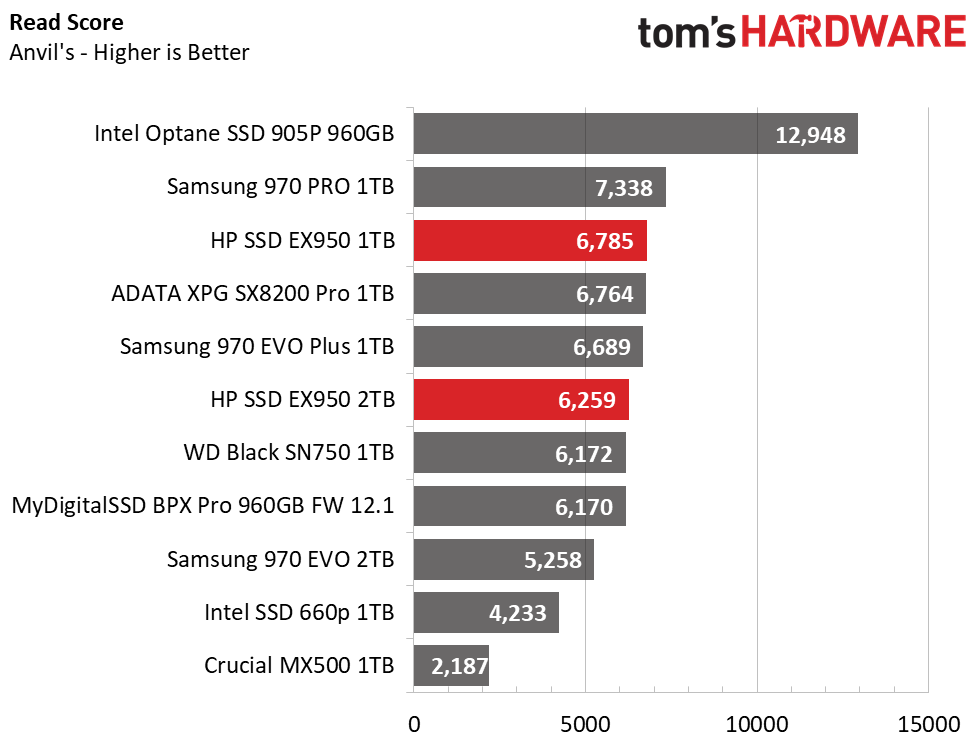

While HP’s SSD EX950s performed great in our application tests, they fell behind a bit in the synthetic workloads. Anvil’s shows them ranking 8th and 9th place overall due to lower-than-average write scores. But the 1TB model ranks third overall in read performance.
CrystalDiskMark
CrystalDiskMark (CDM) is a simple and easy to use file size benchmarking tool.
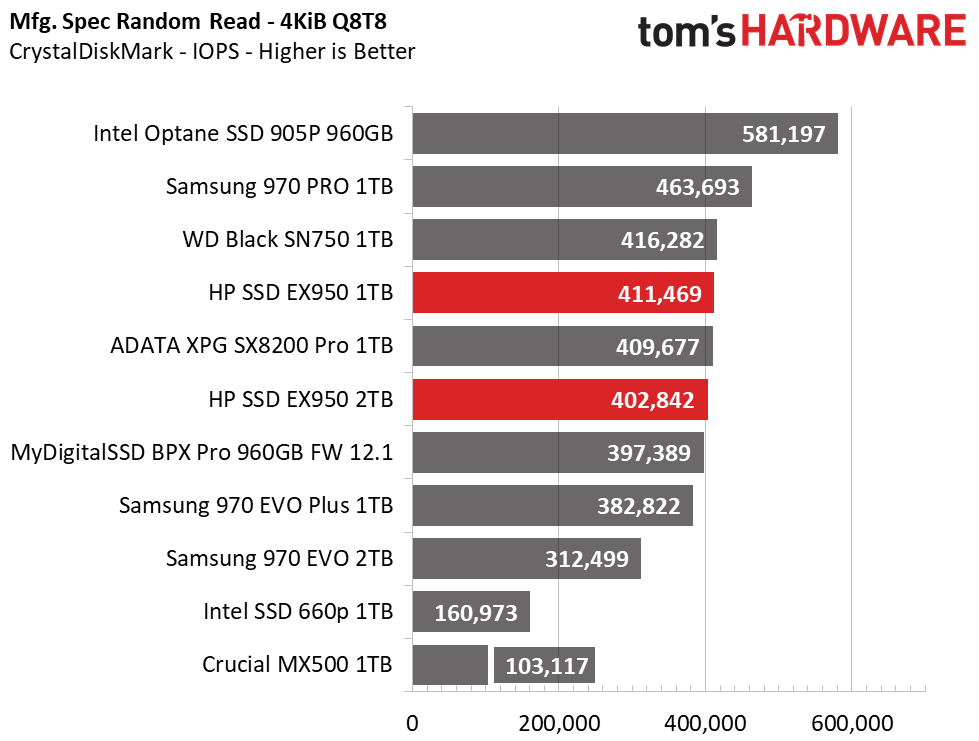


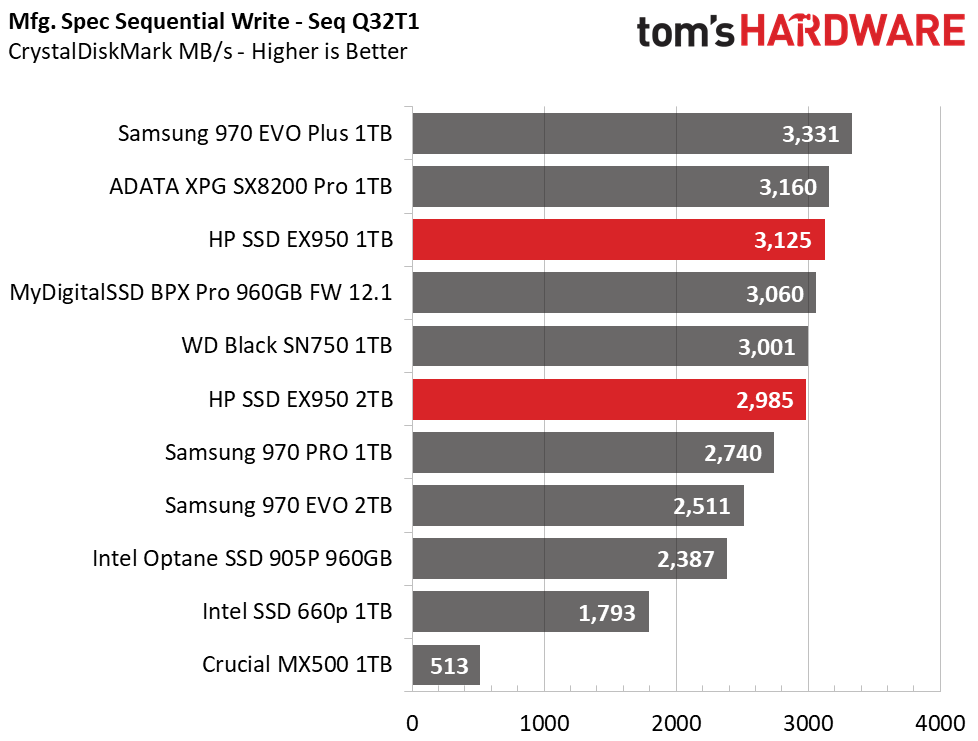
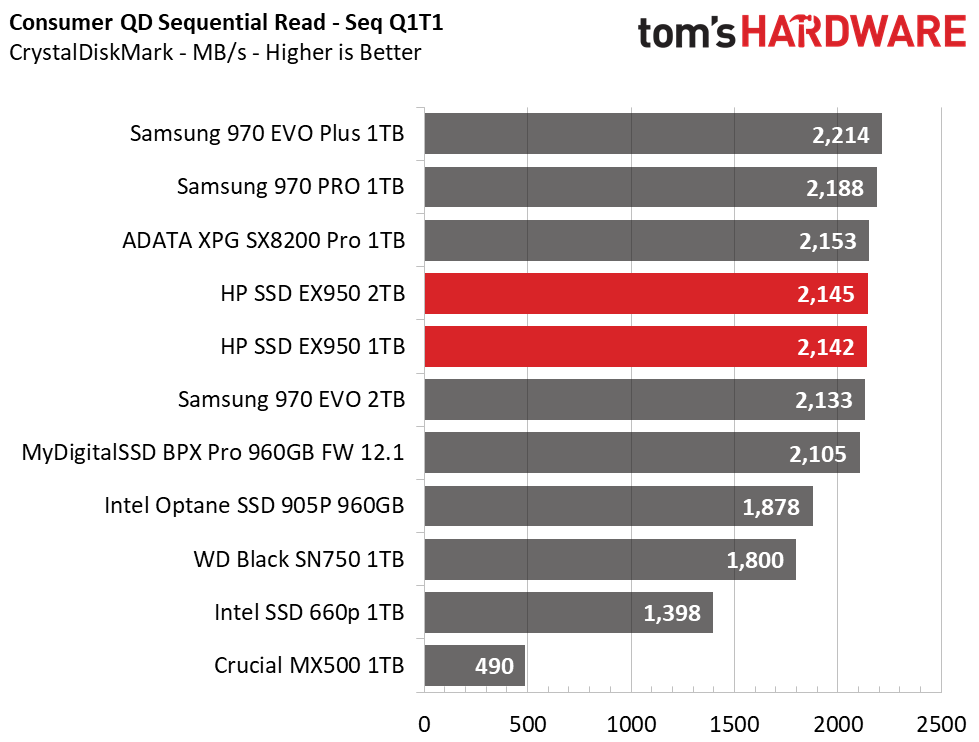
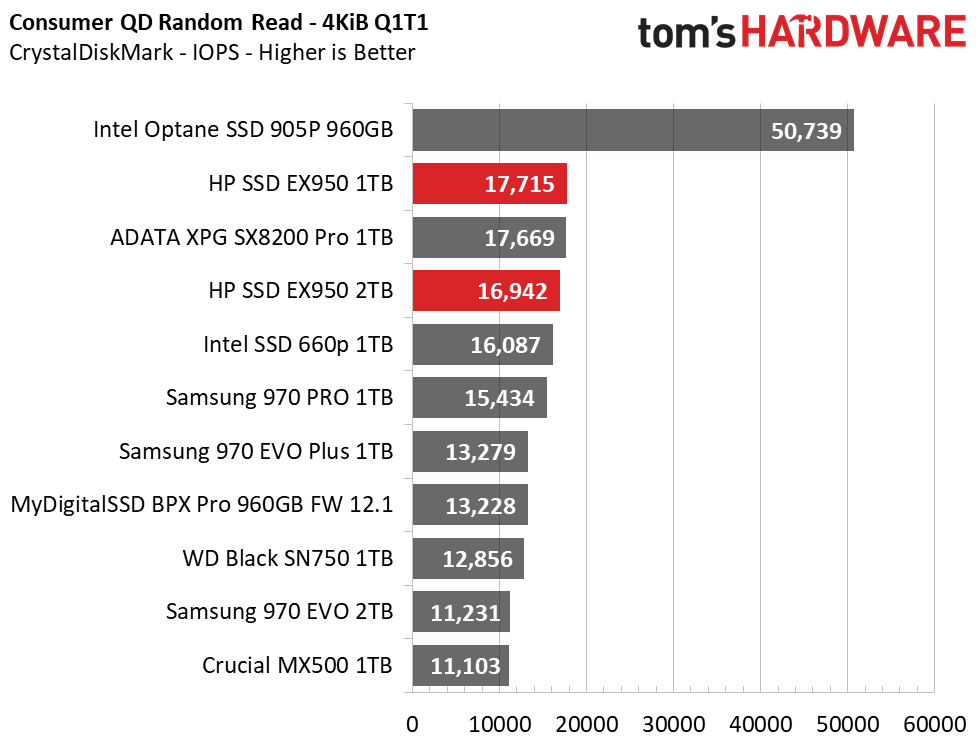
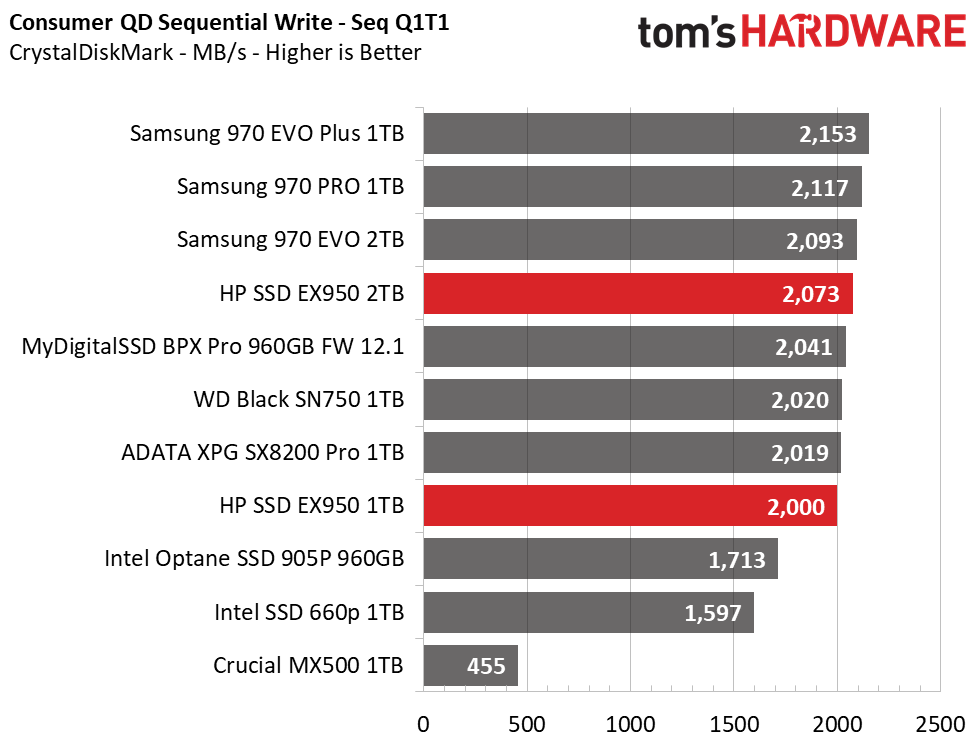
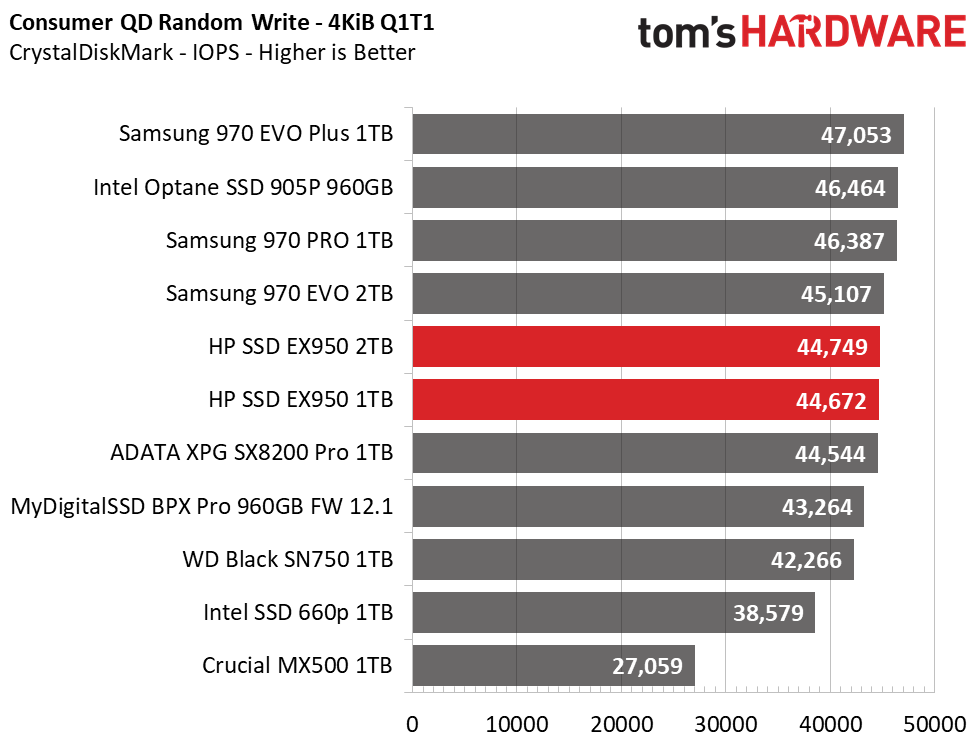
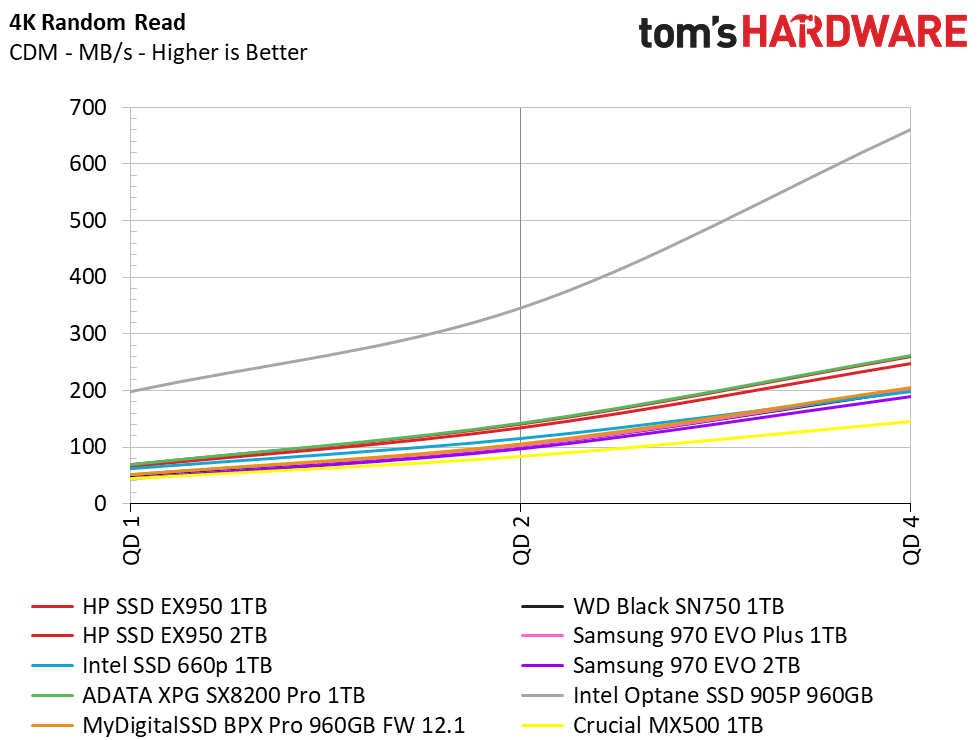

Sequential performance comes in at rated speeds at QD32, although once again the 1TB model exhibits better overall performance. The EX950 scores about 3.5Gb/s read in both capacities, but the 1TB model’s write performance is almost 150 MB/s faster than on the 2TB model.
At QD1, both drives read at ~2,145 MB/s and write at 2GB/s, or just over. Random QD 1 performance is extremely good, surpassing every other drive in the comparison pool except the Intel 905P at 1TB. Scaling up to QD64 shows that the drives are indeed capable of over 400,000 IOPS of random read performance. They also surpass their write performance rating significantly.
Sustained Sequential Write Performance
Official write specifications are only part of the performance picture. Most SSD makers implement an SLC cache buffer, which is a fast area of SLC-programmed flash that absorbs incoming data. Sustained write speeds can suffer tremendously once the workload spills outside of the SLC cache and into the "native" TLC or QLC flash. We hammer the SSDs with sequential writes for 15 minutes to measure both the size of the SLC buffer and performance after the buffer is saturated.
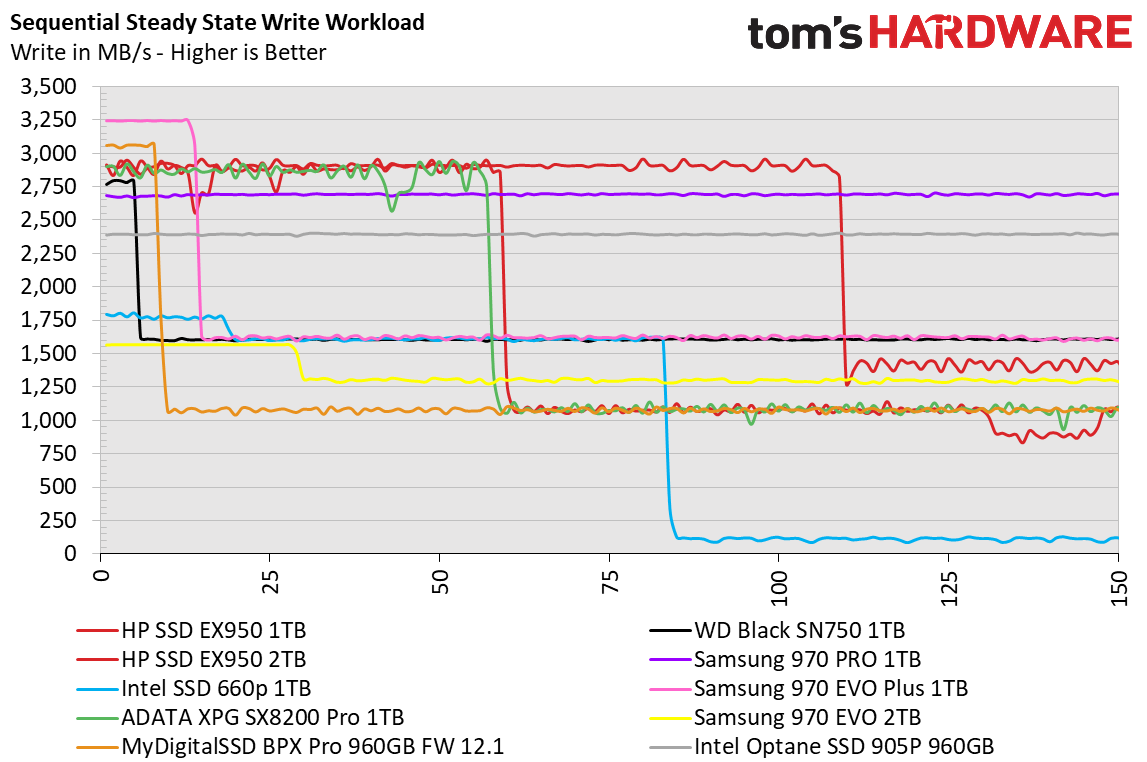
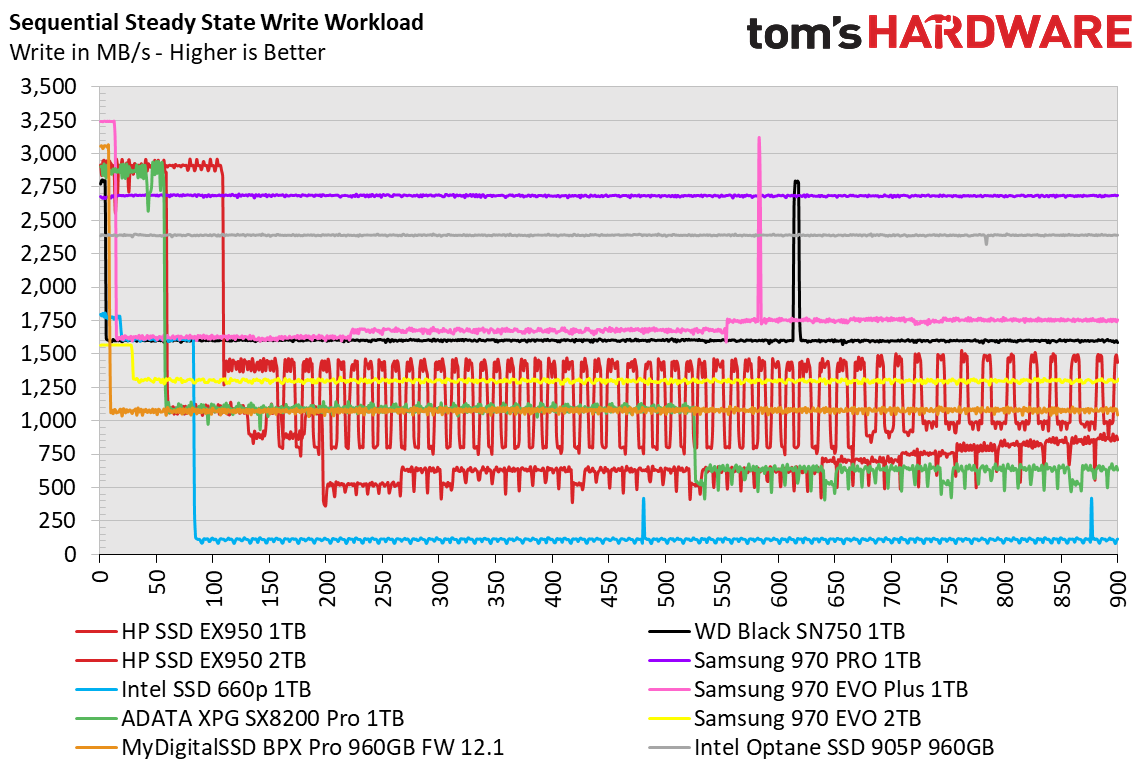
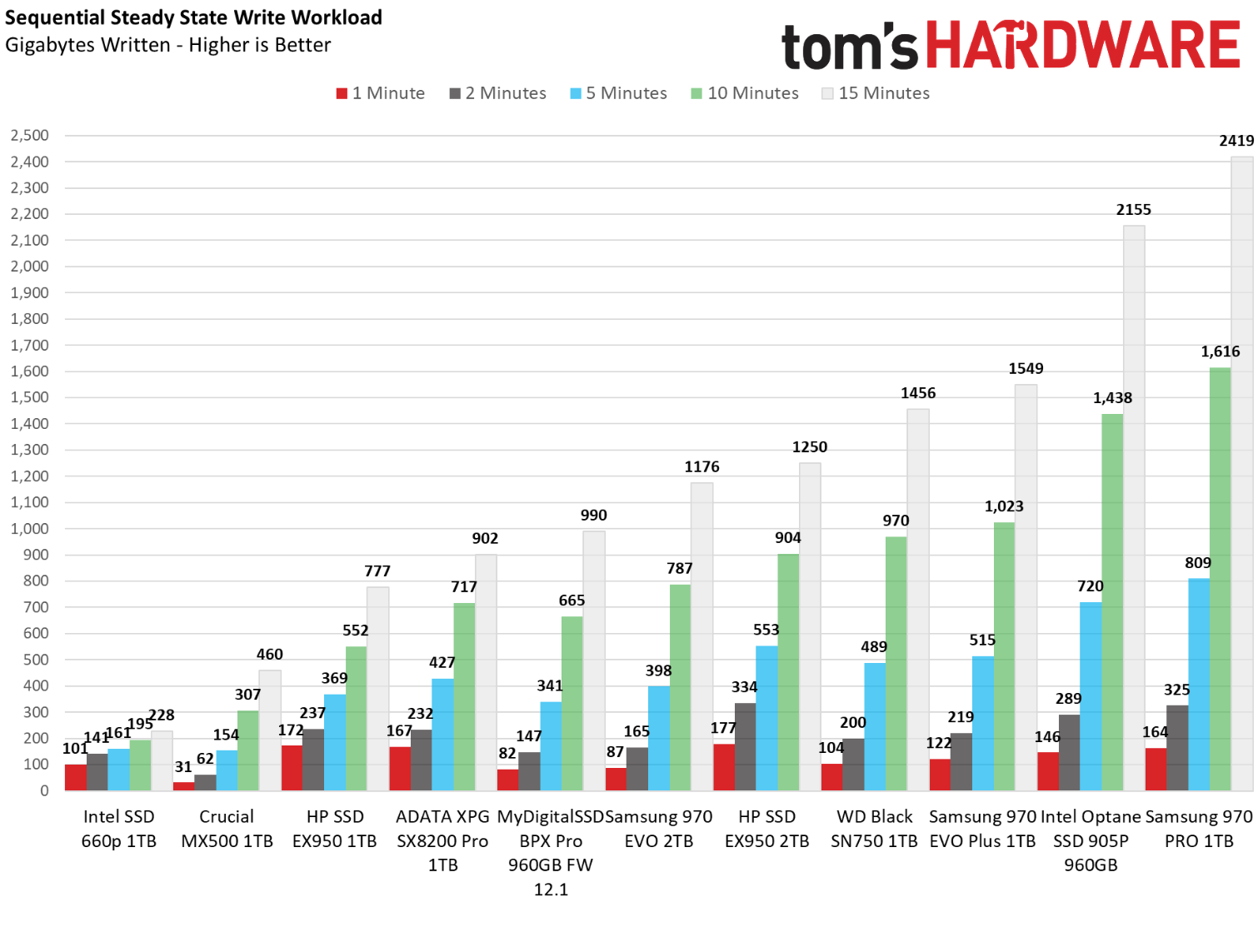
As with most new SSDs, the HP SSD EX950 has an SLC write cache. After writing 170GB of data, the 1TB model slowed to an average of 721 MB/s over the remainder of the test. The 2TB model was able to absorb quite a bit more data–nearly double the amount, in fact.
After writing 317GB of data, the 2TB EX950 slowed down to an average of 1,180 MB/s. Unlike other drives in our comparison pool, the HP drives serve up very inconsistent performance.
Power Consumption
We use the Quarch HD Programmable Power Module to gain a deeper understanding of power characteristics. Idle power consumption is a very important aspect to consider, especially if you're looking for a new drive for your laptop. Some SSDs can consume watts of power at idle while better-suited ones sip just milliwatts. Average workload power consumption and max consumption are two other aspects of power consumption, but performance-per-watt is more important. A drive might consume more power during any given workload, but accomplishing a task faster allows the drive to drop into an idle state faster, which ultimately saves power.
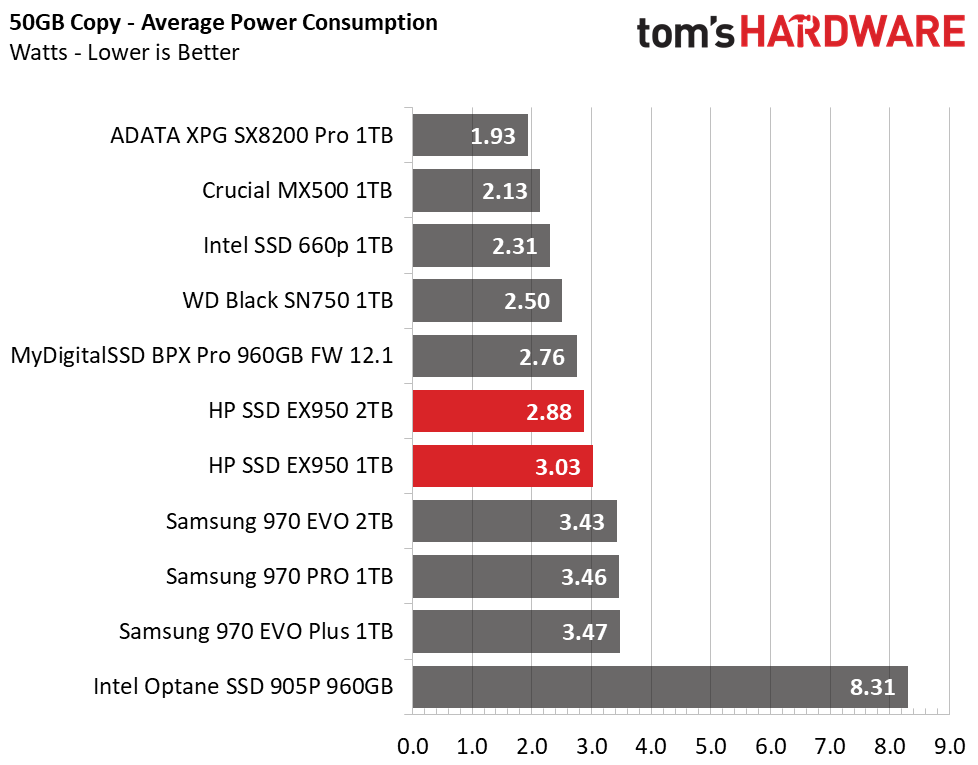
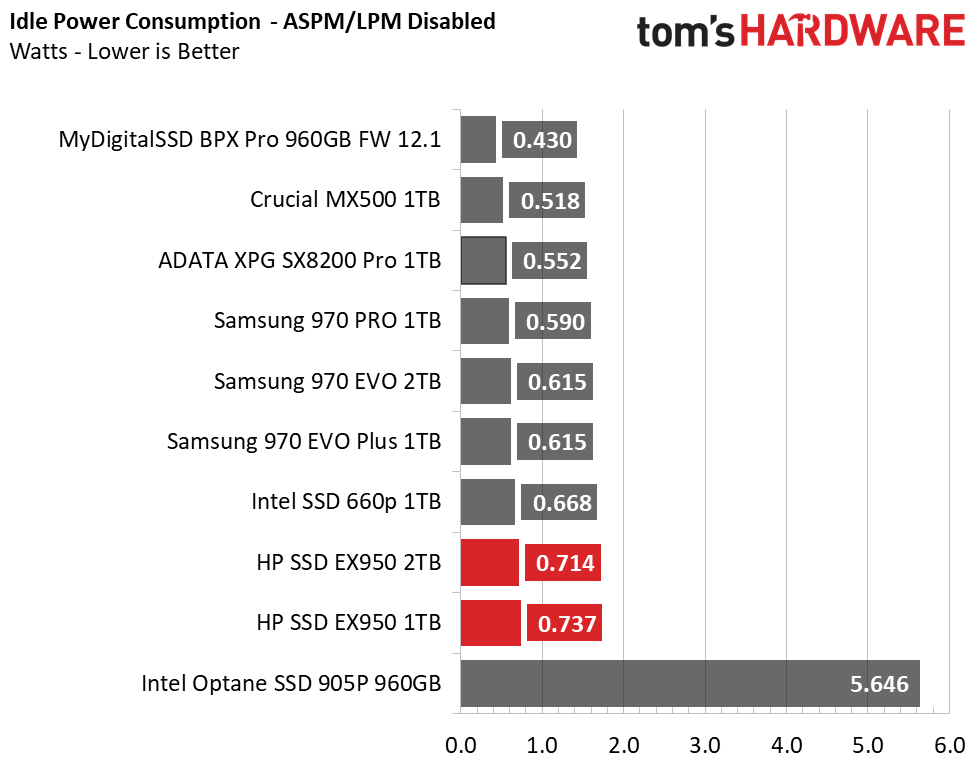
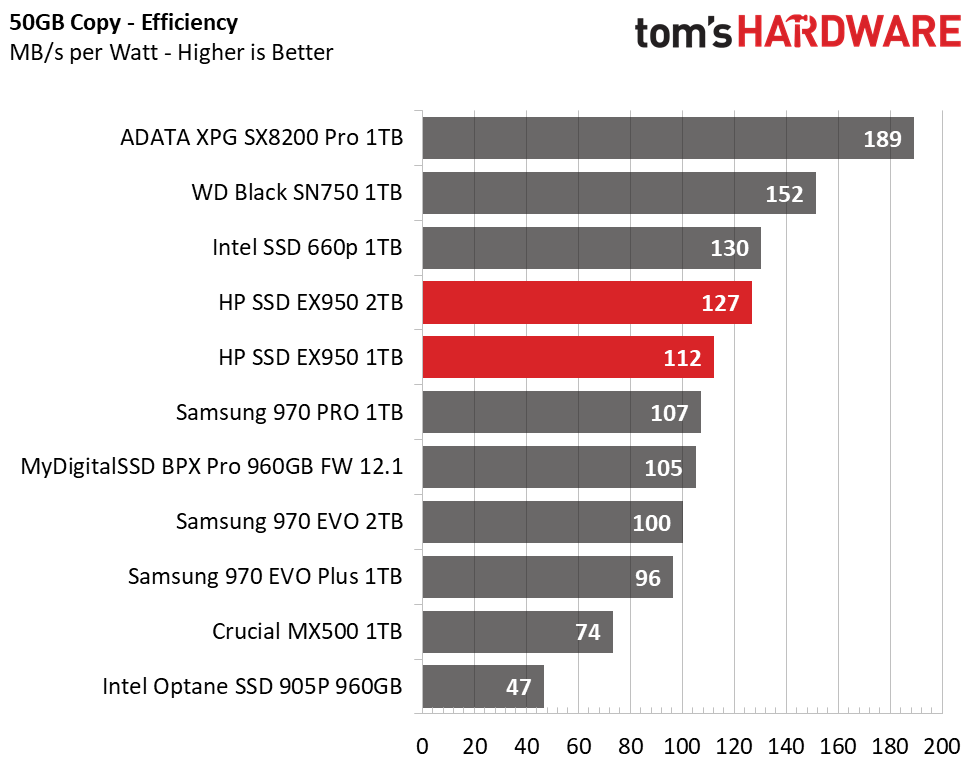
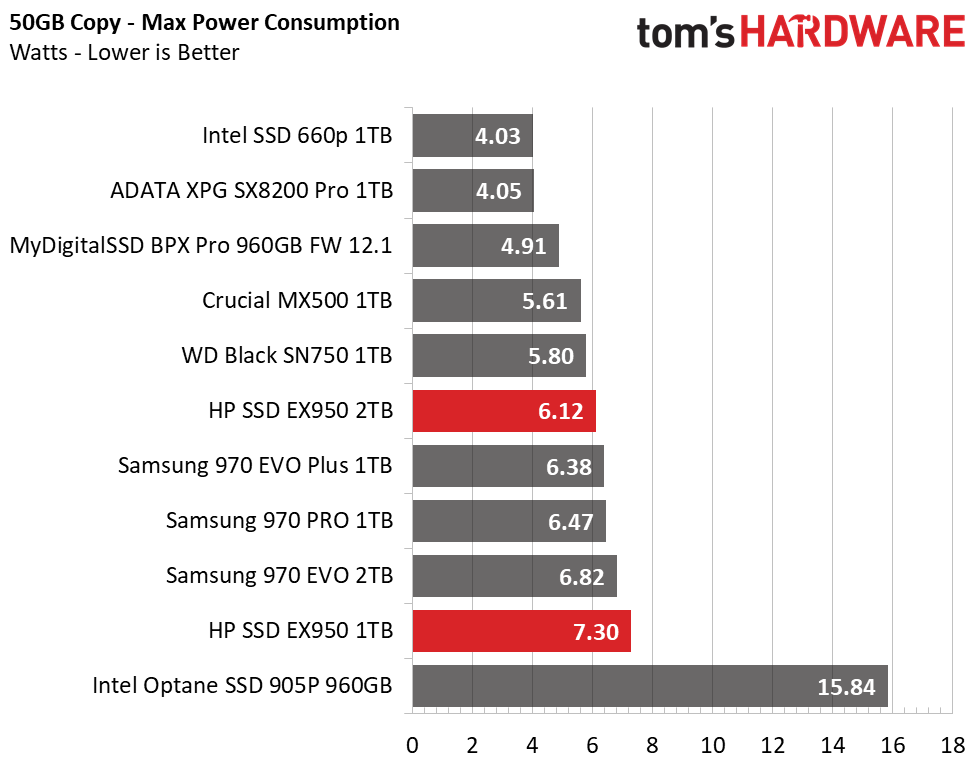
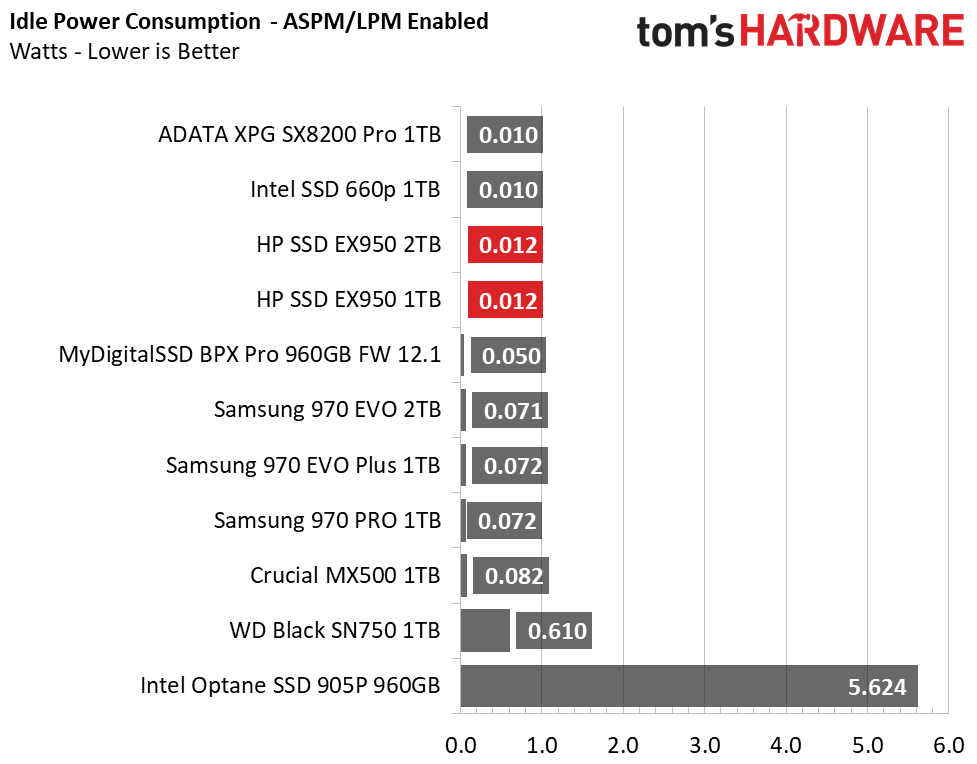
HP’s EX950 is a fairly efficient SSD. With an average of 112 MB/s-per-watt, the 1TB model proves to be a bit less efficient than its larger 2TB brother (127 MB/s-per-watt). The 1TB model consumed more power on average and exhibited a higher peak reading during the 50GB copy test.
At idle, however, the drives are pretty evenly matched. With ASPM disabled they consume a bit over 0.7W. That falls to a minuscule 12mW with ASPM enabled.
MORE: Best SSDs
MORE: How We Test HDDs And SSDs
MORE: All SSD Content
Current page: 1TB and 2TB Performance Results
Prev Page An eSports Gamer’s Delight Next Page ConclusionStay On the Cutting Edge: Get the Tom's Hardware Newsletter
Get Tom's Hardware's best news and in-depth reviews, straight to your inbox.

Sean is a Contributing Editor at Tom’s Hardware US, covering storage hardware.

